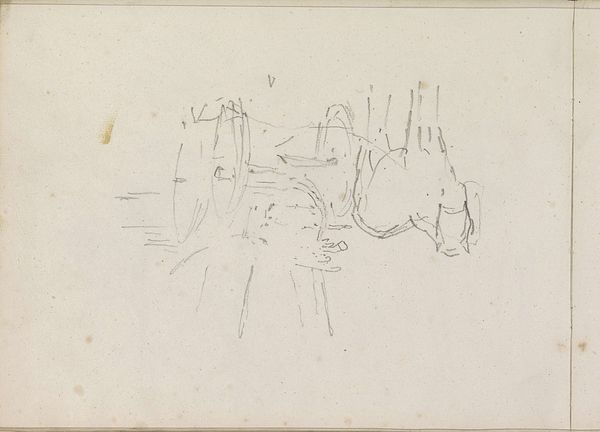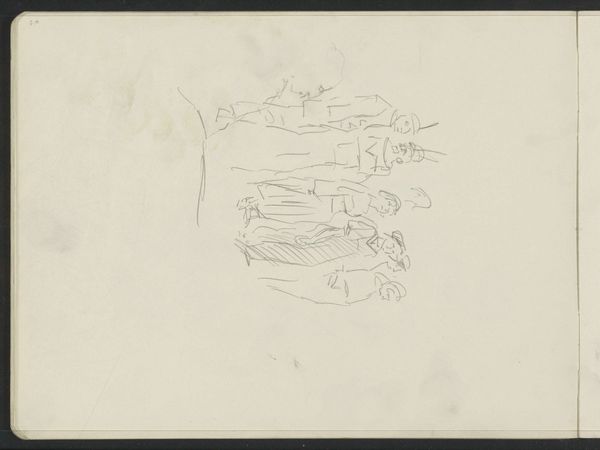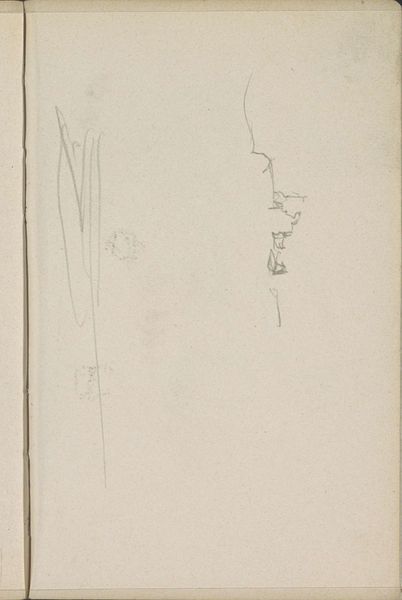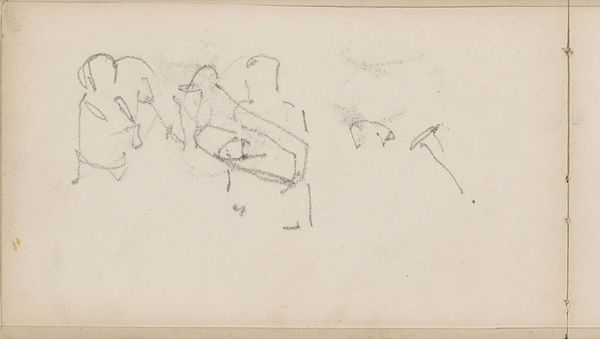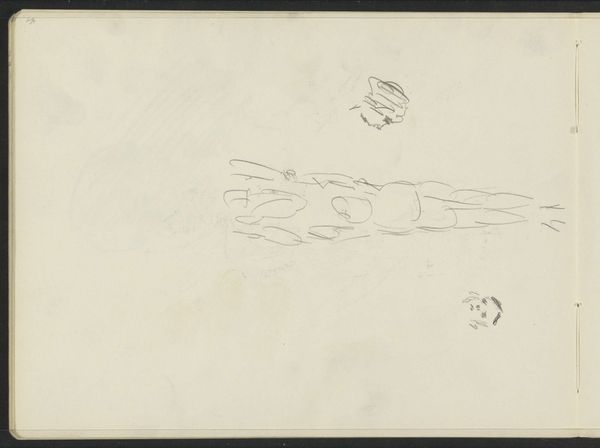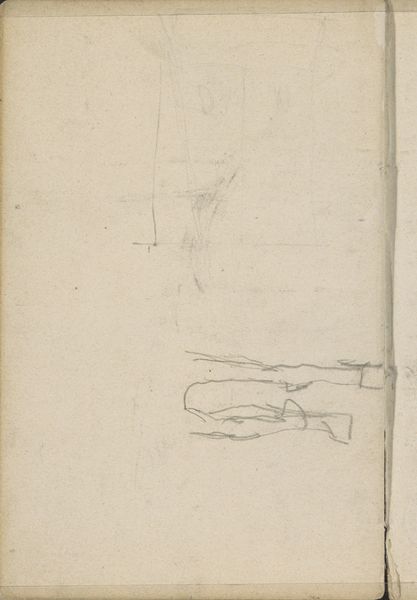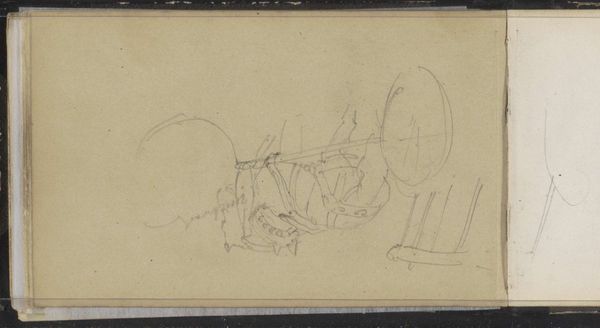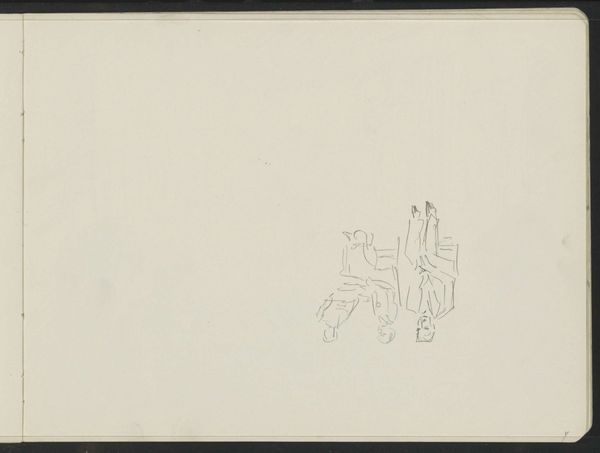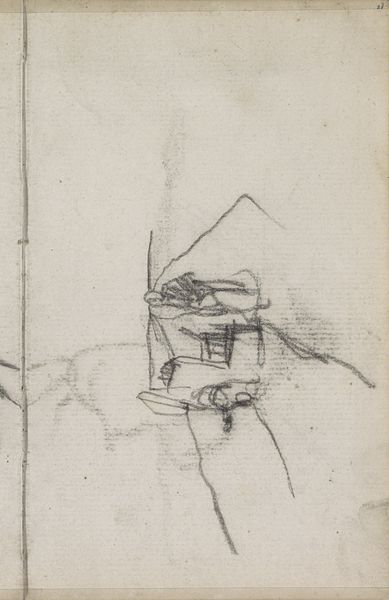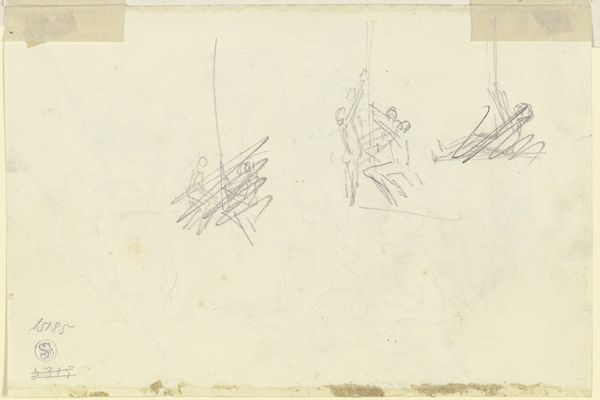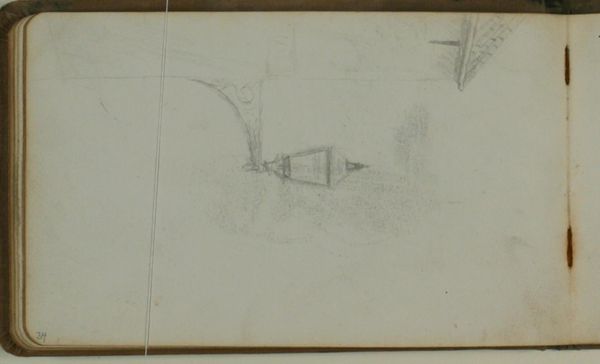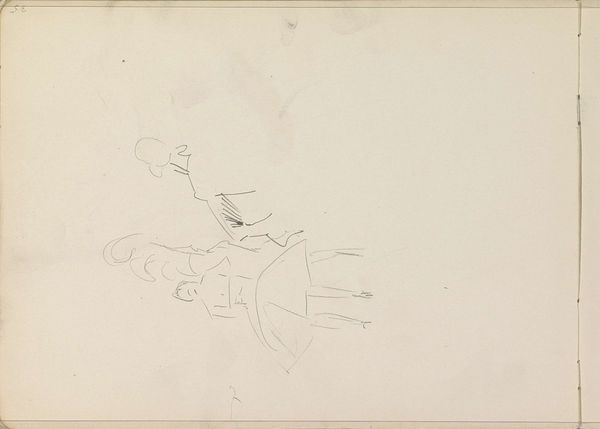
Overkroppen af en mand med hat set bagfra. Rækværk med to træer og en låge. To firkantede tårne 1869
0:00
0:00
drawing, pencil
#
drawing
#
landscape
#
figuration
#
pencil
Dimensions: 204 mm (height) x 115 mm (width) (bladmaal)
Editor: We're looking at P.C. Skovgaard’s 1869 pencil drawing, "Overkroppen af en mand med hat set bagfra. Rækværk med to træer og en låge. To firkantede tårne." Or, "Torso of a man with a hat seen from behind. Railing with two trees and a gate. Two square towers." It feels like a collection of fleeting impressions, quickly captured. What strikes you about this drawing? Curator: It feels like stumbling upon a visual diary, doesn't it? Raw, almost whispered onto the page. The pencil lines are so tentative, so unsure, as if Skovgaard is simply thinking aloud. The "torso of a man" up in the right corner--why isolate that fragment? It's like a phantom, a forgotten memory trying to resurface. I think there’s a real tension between the specificity of the landscape elements and the vagueness of the figure. It's as though the landscape grounds him, tethers him to a reality, but that he only truly recognizes its essence at the threshold of its representation in art. What do you feel about this rawness? Editor: I find it compelling. There's an honesty in it, you know? Like he’s not trying to impress anyone. It feels incredibly personal. I wouldn’t immediately guess it was Skovgaard either, compared to some of his other work. Curator: Precisely! We're so accustomed to seeing finished masterpieces, but drawings like these reveal the artist's process. We sense him experimenting. Trying on a style as if its was someone elses. It reminds me of wandering through a field and pocketing intriguing stones – each sketch is a precious found object. Perhaps we are all a bit like artists with found objects and fragmented expressions waiting to be assembled by memory. What’s your take away after really spending time with it? Editor: That sometimes the unfinished tells a more complete story. That there’s something beautiful and compelling about the artist's initial impulse and all its messiness. Curator: Absolutely. It's a window into the soul of an artist. A chance to witness the magic of creation. A gem for the eyes and mind.
Comments
No comments
Be the first to comment and join the conversation on the ultimate creative platform.


